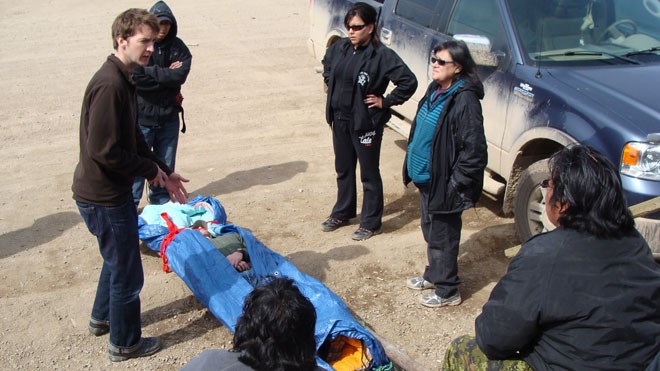Many communities in the province's far north don't have access to 911 service.
While it may not be possible for all First Nations communities to have professional paramedics on call, two researchers with the Northern Ontario School of Medicine (NOSM) have developed a program to foster local first response capacity in those communities.
“It would not be acceptable for Thunder Bay to have an ambulance service and Sudbury not to have an ambulance service,” said Dr. Dave VanderBurgh, one of the researchers responsible for the project. “But we as a culture allow certain populations to be under-serviced.”
VanderBurgh, and his colleague Dr. Aaron Orkin, were part of NOSM's first class of residents, and were exposed then to medical resource gaps in remote northern communities.
“NOSM is an institution that has a well-articulated and well-developed sense of community partnership and social accountability in its mandate,” Orkin said.
In 2010, the pair connected with the Sachigo Lake First Nation in northwestern Ontario, to begin the Sachigo Lake Wilderness Emergency Response Education Initiative.
Sachigo Lake does not have a 911 service, but when both doctors first visited the community, it had around a dozen first responders trained through a Ministry of Health and Long-Term Care program.
But Orkin said the limited number of people trained in first aid left gaps, and there was no guarantee they would be available in case of an emergency.
The two doctors devised a five-step program, and started by meeting the community and assessing its needs. They needed to understand what resources the First Nation had at its disposal and what kinds of emergencies it was likely to face.
The next step was to create a course from scratch, tailored to Sachigo Lake's needs.
“The best thing to do in case of an emergency isn't the same everywhere,” Orkin said.
In larger cities, for example, paramedics are trained to strap victims from vehicle collisions to a backboard so they don't do more damage to their spines.
But in a remote community like Sachigo Lake, Orkin said, strapping someone to a backboard could be detrimental, because it could take hours, or even days before they receive hospital care.
After training locals with their new first aid program Orkin and VanderBurgh re-evaluated the re-designed the course, based on the lessons they had learned from the first training round.
They added a mental health component to the program to help address alcohol and drug abuse problems.
Once the new curriculum was ready, they taught the community the improved course.
In October, both doctors held a meeting in Sioux Lookout with First Nations leaders, and representatives from all three levels of government, to expand the program they developed in Sachigo Lake to a regional level.
Orkin said the goal is to tailor first response programs to First Nation reserves across the north. Because each community has different needs, the training programs would emphasize different aspects for each.
“Local people, given the right set of skills, can provide many of the interventions trained paramedics can provide,” Orkin said. “Doing something in an emergency is almost always better than doing nothing.”
Join Sudbury.com+
- Messages
- Post a Listing
- Your Listings
- Your Profile
- Your Subscriptions
- Your Likes
- Your Business
- Support Local News
- Payment History
Sudbury.com+ members
Already a +member?
Not a +member?
Sign up for a Sudbury.com+ account for instant access to upcoming contests, local offers, auctions and so much more.
